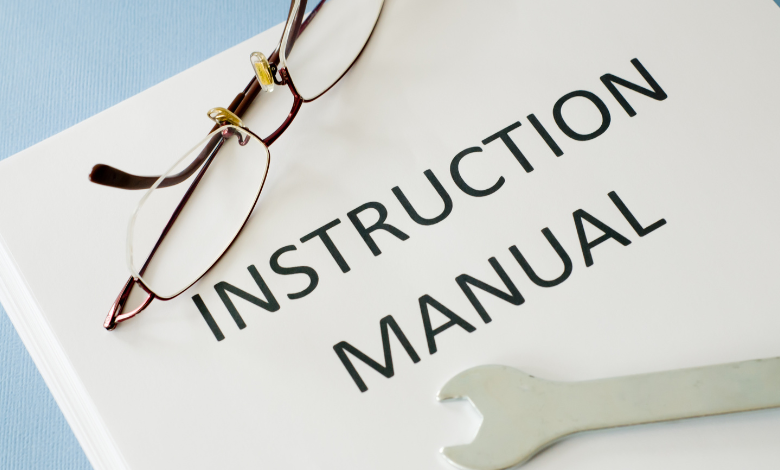57226-0 instructions

57226-0 Instructions: A Comprehensive Guide
What is “57226-0”?
“57226-0” might sound like a simple code, but it holds significant importance in its respective field. Whether it’s a product code, technical protocol, or procedure, understanding the context is vital for correct implementation.
Commonly, such codes are tied to technical instructions, assembly processes, or compliance standards. They simplify communication across industries by offering a standardized reference.
Purpose of the Instructions
Why are “57226-0 Instructions” so critical? The purpose of any instruction set is to ensure consistency, accuracy, and efficiency. By following these guidelines, users can avoid errors, ensure compliance, and achieve desired outcomes seamlessly.
For instance, in technical applications, a minor deviation from instructions could lead to equipment failure or safety risks. The “57226-0 Instructions” are designed to mitigate such issues by laying out clear, step-by-step actions.
Key Components of the “57226-0 Instructions”
Breaking down the instructions into manageable sections ensures clarity:
- Preparation Steps
- Gather necessary tools and materials.
- Review safety guidelines.
- Execution Steps
- Follow detailed actions provided in sequence.
- Troubleshoot as needed.
- Completion and Maintenance
- Verify the outcome against benchmarks.
- Record and maintain for future reference.
Understanding Terminology
Technical instructions often use specialized terms. Let’s decode some common jargon:
- Assembly Point: The location or step where components come together.
- Torque Setting: The specific pressure or force required during assembly.
- Compliance Standards: Rules to ensure safety and efficiency.
By understanding these terms, you’ll find it easier to follow even complex instructions.
Preparing to Follow the Instructions
Before diving in, preparation is key. Here’s what you need:
- Checklist of Materials
- Relevant tools like screwdrivers or calibration devices.
- Instruction manual for reference.
- Safety Gear
- Protective gloves and goggles.
- Emergency tools like fire extinguishers (if applicable).
Step-by-Step Guide
- Step 1: Read the Instructions Thoroughly
Take time to understand every detail before starting. - Step 2: Assemble Materials and Tools
Gather everything listed in the preparation phase. - Step 3: Begin Execution
Follow each step meticulously, ensuring you match the sequence. - Step 4: Troubleshooting
If an issue arises, refer to the troubleshooting section of the instructions. - Step 5: Verify Completion
Cross-check the final outcome against expected results.
Common Mistakes to Avoid
- Skipping steps due to overconfidence.
- Misinterpreting technical terms.
- Ignoring safety guidelines.
Avoiding these pitfalls ensures a smoother process.
Safety Guidelines
Safety should always be a priority. Follow these rules:
- Always wear protective gear.
- Ensure your workspace is well-lit and free from hazards.
- Familiarize yourself with emergency procedures.
Maintenance After Implementation
Once you’ve completed the process, ongoing maintenance ensures longevity.
- Inspect Regularly: Check for wear and tear.
- Follow Manufacturer Guidelines: Stick to recommended servicing intervals.
Real-Life Examples
Take a manufacturing company, for instance. When their team followed “57226-0 Instructions” accurately, they achieved a 25% reduction in assembly time and improved product quality.
Benefits of Proper Execution
Why bother with precision? Because it pays off:
- Time Savings: Avoid backtracking or redoing work.
- Cost Efficiency: Reduce waste and errors.
- Enhanced Safety: Protect yourself and your team.
Conclusion
The “57226-0 Instructions” are your roadmap to success. By understanding their purpose, preparing adequately, and following them step-by-step, you can ensure efficient and safe outcomes.
FAQs
- What does “57226-0” stand for?
It’s likely a specific code tied to a product or protocol. Check the relevant context for details. - Why are instructions like this important?
They ensure safety, accuracy, and compliance with industry standards. - How can I avoid common mistakes?
Take time to read thoroughly, prepare properly, and follow steps in order. - What tools are typically needed?
This varies but could include basic tools, safety gear, and the instruction manual. - Where can I find more information?
Refer to official manuals or contact the manufacturer for clarification.



